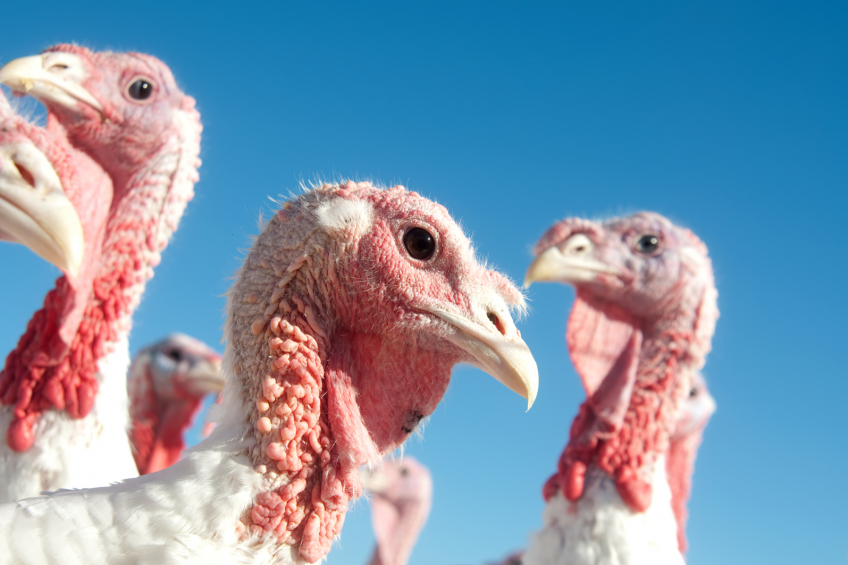US to encounter avian influenza again?

The US experienced the most severe animal disease emergency ever in 2015 when H5N2 highly pathogenic avian influenza affected turkey and egg producing flocks in the upper Midwest. From initial observations the relatively confined outbreak in turkeys in Indiana does not seem to be a repetition of the 2015 epornitic.
From March through mid-June 2015, the H5N2 infection was responsible for the depletion of 35 million laying hens, approximately 4 million replacement pullets and 7 million turkeys. The pathogen involved was a reassortant with the H5 genes derived from Eurasian AI strains and the neuraminidase genes from AI isolates identified in North American waterfowl.
Restocking of poultry farms in progress
The epornitic which essentially involved farms in Iowa, Minnesota, South Dakota, Nebraska and Wisconsin was controlled by rapid identification of affected farms, mass depletion, disposal of carcasses and decontamination. At the present time restocking is in progress and most facilities anticipate being in full production by September 2016.
The incidence rate and extent of the outbreak initially overwhelmed regulatory authorities in the states affected and the United States Department of Agriculture-Animal Plant Health Inspection Service (USDA-APHIS) which is responsible for control and eradication of exotic diseases was hard pressed to respond to the incident cases. Within a few weeks however, appropriate procedures were developed for mass depopulation and disposal of carcasses and by mid-June, the outbreak was over without having to resort to vaccination which was contemplated.
Intensive biosecurity needed
Lessons learned from the outbreak involved the need for more intensive biosecurity on farms, especially for in-line egg-breaking complexes with 1 to 4 million hens as well as turkey growing units with from 5,000 to 100,000 birds. In areas with a high density of poultry commensurate capital expenditure on Structural biosecurity and upgrading Operational biosecurity is essential, coupled with a marked change in culture with respect to disease prevention.
The Federal authorities also developed improved responses including logistics, expediting diagnosis using advanced molecular techniques and deployment of personnel including Federal and state personnel and contractors.
Recent emergence of H7N8 in Indiana
Most recently, H7N8 has been reported in the state of Indiana. The index farm comprised 4 turkey growing houses with a flock of 44,000 tom turkeys aged 135 days as of January 13th. In addition there were 2 brooding houses with 20,000 45-day tom turkeys on the same multi-aged site. An adjacent contact farm comprised 2 houses with a total of 20,000 tom turkeys.
A Unified Command Post was established in Jasper, IN staffed by a trained Incident Management team comprising Federal, State and local agencies applying policies developed and refined since the 2015 H5N2 HPAI epornitic.
TIME LINE for the sequence of events associated with the most recent outbreak of H7N8 avian influenza
Poultry flocks in the area
In the 10 km control area, officials identified 65 commercial farms located in 50 turkey houses and 15 egg production flocks in addition to an egg breaking plant. There were also 17 hobby flocks which were immediately quarantined and assayed.
Door-to-door inspections commenced and are still in progress to ascertain the number of non-commercial flocks in the control area. A total of 503 homes and smallholdings have been visited since the surveillance program was initiated. Effective January 20th 321 assays have been carried out without detecting any AI antigen. There have not been any incident cases reported unlike the progression in 2015.
Observations of current situation
While it is early in the course of this outbreak conservative optimism is appropriate. The following observations are relevant:
- This is the first introduction of H7N8 strain avian influenza into commercial poultry recorded in the US. The source of the virus has yet to be determined but is presumed to be from free-living birds.
- The epidemiology of the infection will be investigated and specifically biosecurity procedures will be compared to those existing on farms affected in Minnesota and the Dakotas in 2015 to identify risk factors.
- There is concern that the low pathogenicity strain H7N8 underwent a mutation in a relatively small population of turkeys to become highly pathogenic within a short period time. The chronology of the infection suggests that the index flock was not infected before the first week of January 2016 but demonstrated mortality associated with mutation to HPAI during the second week of the month.
- The USDA has purchased a stock of H5 vaccines which would not be useful in the event of an extensive outbreak of H7 strain avian influenza.
- Negotiations with importing nations appear to have resulted in acceptance of the OIE principle of regionalization. Effective January 19th only Japan and Korea have imposed a nationwide ban on the importation of all US poultry, eggs and breeding stock. Most other countries have confined their embargos to either the state of Indiana or the affected county.
- While it is too early to predict with any degree of certainty the progress of the outbreak, rapid diagnosis, depopulation of affected and contact flocks and establishing strict quarantine measures should confine the infection to the control area. As a precautionary measure surveillance has been extended by an additional 10 km into adjoining counties. Absent a large wild-bird reservoir of virus with numerous shedders, further outbreaks are not anticipated. It is possible that some flocks may be currently incubating infection but if no further cases are reported or are demonstrated through surveillance during the next 14 days, it may be concluded that the outbreak is contained and effectively eradicated.
- The emergence of a potentially catastrophic disease such as HPAI has an effect on the value of the equity of public-traded poultry companies. On January 15th, the shares of Sanderson Farms fell 7.5% on a day when the Standard & Poors Index fell 3.0%. This decline may be compared with a 2.5% drop in the shares of Tyson Foods and approximately 5.0% for Pilgrim’s Pride. Sanderson Farms produces broilers weighing close to 4 kg and is therefore more dependent on export of leg quarters than competitors. In contrast Tyson Foods produces broilers, beef and pork with approximately equal sales value and the company markets a high proportion of their broiler production in the form of added value products to the domestic market including food service and retail. Cal-Maine Foods an egg producer actually climbed 7.5% on January 15th based on speculation that an extensive HPAI outbreak would result in a rise in egg price as occurred in 2015.












